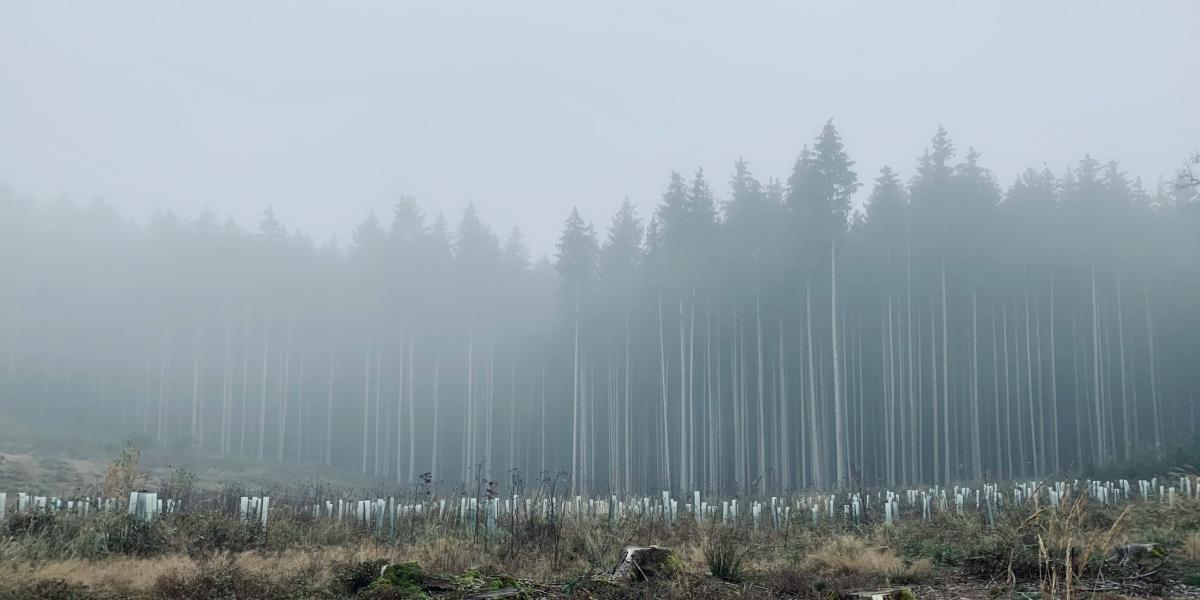
While the November 2024 election signaled drastic changes for federal environmental policy, Washington voters defied the trend. Even 42% of conservative Washington counties voted to support a healthier environment by voting against Initiative 2117, which would have repealed the state’s Climate Commitment Act (CCA).
The CCA, originally enacted in 2021, created Washington’s cap-and-invest program. It is only the second statewide market-based emissions reduction system in the U.S. after California’s cap-and-trade program. Opened in 2023, Washington’s cap-and-invest program provides pathways for carbon emitters (e.g., fuel suppliers, natural gas and electric utilities, and others) to lower their carbon emissions by setting a declining cap on total emissions, providing free allowances, and allowing emitters to purchase additional allowances through an auction, trading market, or as carbon offsets.
Carbon offsets allow emitters to compensate for (i.e., offset) their greenhouse gas emissions by supporting emissions reductions elsewhere. Like California’s offset program, this can include earning credits for investing in improved forest management practices that store more carbon. Western Washington’s temporal rainforests are especially well suited for this: their quick growing conifer forests support both timber production and carbon sequestration by removing CO2 from the air to build woody biomass. A 2021 study by Robertson et al. found that of all the potential improved forest management techniques in Washington, longer timber rotations provide the greatest carbon sequestration potential.
Building off our previous work with The Nature Conservancy, our team at emLab published a study in Climate Change Economics outlining new cost estimates for carbon sequestered through longer timber rotations on private forests in western Washington and Oregon. Unlike previous carbon research on longer timber rotations, we incorporate the impact of alternative forest management strategies to illustrate tradeoffs between site quality, carbon storage, timber production, and cost when selecting management strategies.
In this region, timber is typically grown for about 40 years to maximize profit – but this does not align with peak carbon storage. To maximize carbon sequestration, timber should be grown closer to its greatest average annual yield, or what foresters refer to as the culmination of mean annual increment. Since this occurs later than 40 years for Douglas-fir, the predominant commercial species, we modeled longer timber rotations of 60 and 80 years and confirmed that longer rotations sequester more carbon than shorter rotations when compared across the same total number of years. However, longer rotations are also more costly to landowners since the final timber harvest is pushed further into the future. If these costs are not too high, carbon offsets could be a viable way to compensate landowners.

These figures show the estimated total carbon stored in the private forests of our study region. Carbon under business-as-usual 40 year rotations (shown in green) is compared to carbon under 60 year rotations on the left and carbon under 80 year rotations on the right (both shown in black). The overlap of curves is shown in dark green. In short: longer rotations are a promising strategy for increasing forest-based carbon storage.
We examined how thinning, a management intervention that is often used during longer timber rotations, affects the quantity and cost of carbon sequestered. Pre-commercial thinning removes smaller trees and helps improve the growth of the remaining trees, while commercial thinning has the added benefit of providing merchantable timber, and thus revenue, before the final harvest. Our study isolates these impacts and finds that combining commercial thinnings with longer rotations can significantly reduce the cost associated with extending rotations. Not only does this reduce costs by 35–48% – or down to $13–18/MT CO2e – it also generates interim profits before the final harvest. This allows landowners to simultaneously improve the cost efficiency of longer timber rotations and create cheaper carbon offsets for the market, while still gaining climate benefits.
These findings are particularly relevant given recent trends in Washington’s carbon market. In Washington's first auction after the Initiative 2117 vote, the carbon allowance price settled at $40/MT CO2e, which is a 35% increase in the previous auction price, indicating increased demand and confidence in the cap-and-invest program. Encouragingly, the majority of the private forest stands we modeled have carbon costs below this market price, suggesting real potential for forest offsets to contribute cost-effectively to the program’s success. Furthermore, since rotations of 60 to 80 years are a clear departure from business-as-usual 40 year rotations in the region, there is greater confidence that forest offsets for longer rotations truly deliver additional carbon sequestration.
Our research on the carbon costs behind improved forest management can enhance the functionality of the nascent Washington cap-and-invest program and future emissions markets like Oregon’s Climate Protection Program. Incorporating timber management choices can help make these strategies more realistic to landowners. Ultimately, Washington voters sent a clear message: they want climate action. Through the CCA, the state has an opportunity to deliver meaningful emissions reductions while supporting landowners and healthy forests along the way.



